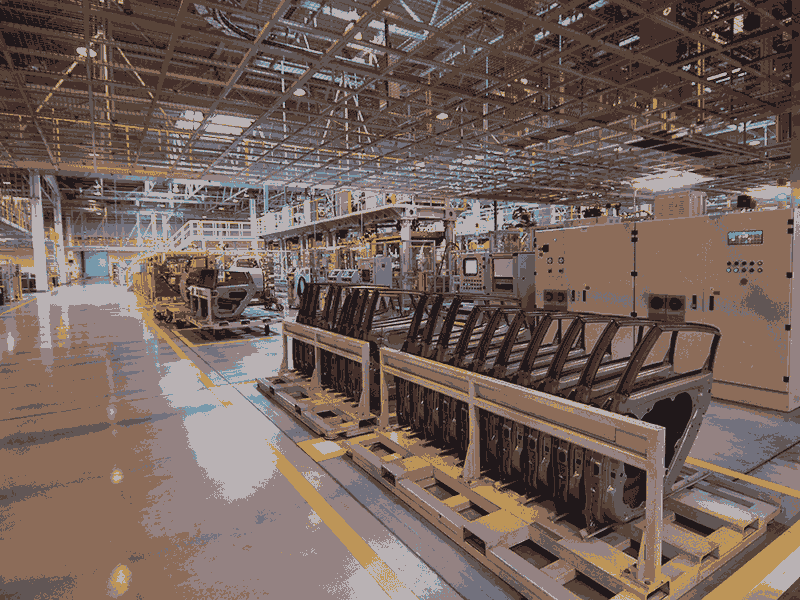What is the Horizontal Impact Test System (HITS)?
The HITS consists of two main parts:
- A large sled that runs on a track.
- A bulkhead or vertical surface.
The product or packaging under test is mounted on the sled. The sled is then programmed to approach and collide with the bulkhead using a specific shock profile. The shock profile can replicate
different types of impacts, so we can measure how the product responds.
What types of impacts can the HITS replicate?
Our HITS replicates side impacts. The most common are:
- Short-duration impact events, such as a truck backing into a dock or a pallet marshalling with a forklift.
- Long-duration impact events responding to railcar coupling.
Both these types of events are commonplace throughout the
automotive industry’s manufacturing and assembly supply chain.
Is the HITS the best choice for this type of testing?
Essentially, yes. There’s really no other way to replicate in a laboratory the effect of long-duration, high-velocity
impacts, such as railcar coupling, other than a programmable horizontal impact sled. And since the HITS can be programmed to replicate both short- and long-duration impacts, conducting both tests at the same lab can save time and money.
What types of products and packaging can be tested via HITS?
Many different types of packaging are used in the automotive space. Here are a few common examples:
- Metal racks filled with stamped parts, such as doors, door parts, hoods, roofs, and bumpers, which are commonly en route from the stamping facility to the assembly plant.
- Returnable containers, usually plastic bins, pallets, or trays, which are custom designed and thermoformed to snugly fit specific parts.
- Expendable containers, which are similar to the above, but made of corrugated cardboard and intended for one-time use.
Why is it important to test these automotive packaging systems using the HITS?
This testing method assesses whether the packaging can prevent the product(s) from being displaced in the event of an impact. If a truck containing a rack of car parts arrives at an automotive assembly plant, it’s often a robot, rather than a person, who then picks the part out of the rack and moves it to its location. If the part has been knocked out of place, the robot goes down, and the entire system screeches to a halt.
Even one hour spent repacking parts that have popped out of their containers in transit can be incredibly costly. Investing in horizontal impact testing up front reduces downtime by ensuring that your packaging and product can withstand
every step of the supply chain and keep the process running smoothly, saving both time and money.
What can the HITS do for other industries?
Horizontal impact testing using the HITS is a highly effective way of testing sidewall rigidity, especially for
consumer goods. This is important from a
load stability perspective. If a pallet full of water bottles is jostled by a forklift or a truck backing into a loading dock, it will sway in response to the impact. The shock input itself is inevitable, but the pallet’s ability to absorb the momentum caused by the shock is determined by sidewall rigidity. If sidewall rigidity is insufficient, the pallet will be unable to resist the swaying motion and could topple over, taking other pallets with it. This can lead to costly product loss and major slowdowns, not to mention a mess. Testing the pallet’s response to
horizontal impact on the HITS beforehand can save a lot of time and money.

